C1: Lab Safety
This pre-lab reading will introduce you to the fundamental principles and practices of lab safety. Understanding and adhering to these guidelines is crucial for a safe and productive learning environment. Failure to follow safety protocols can result in injury and/or removal from the lab.
1. Why is Lab Safety So Important?
Biology labs often involve working with chemicals, biological specimens, and specialized equipment. While these are essential for learning, they can also pose potential hazards if not handled correctly. Lab safety protocols are designed to:
- Protect you and others from injury or illness.
- Prevent damage to equipment and the laboratory.
- Ensure the integrity and accuracy of your experiments.
- Foster a responsible and professional attitude towards scientific work.
Think of safety as the foundation upon which all successful experiments are built.
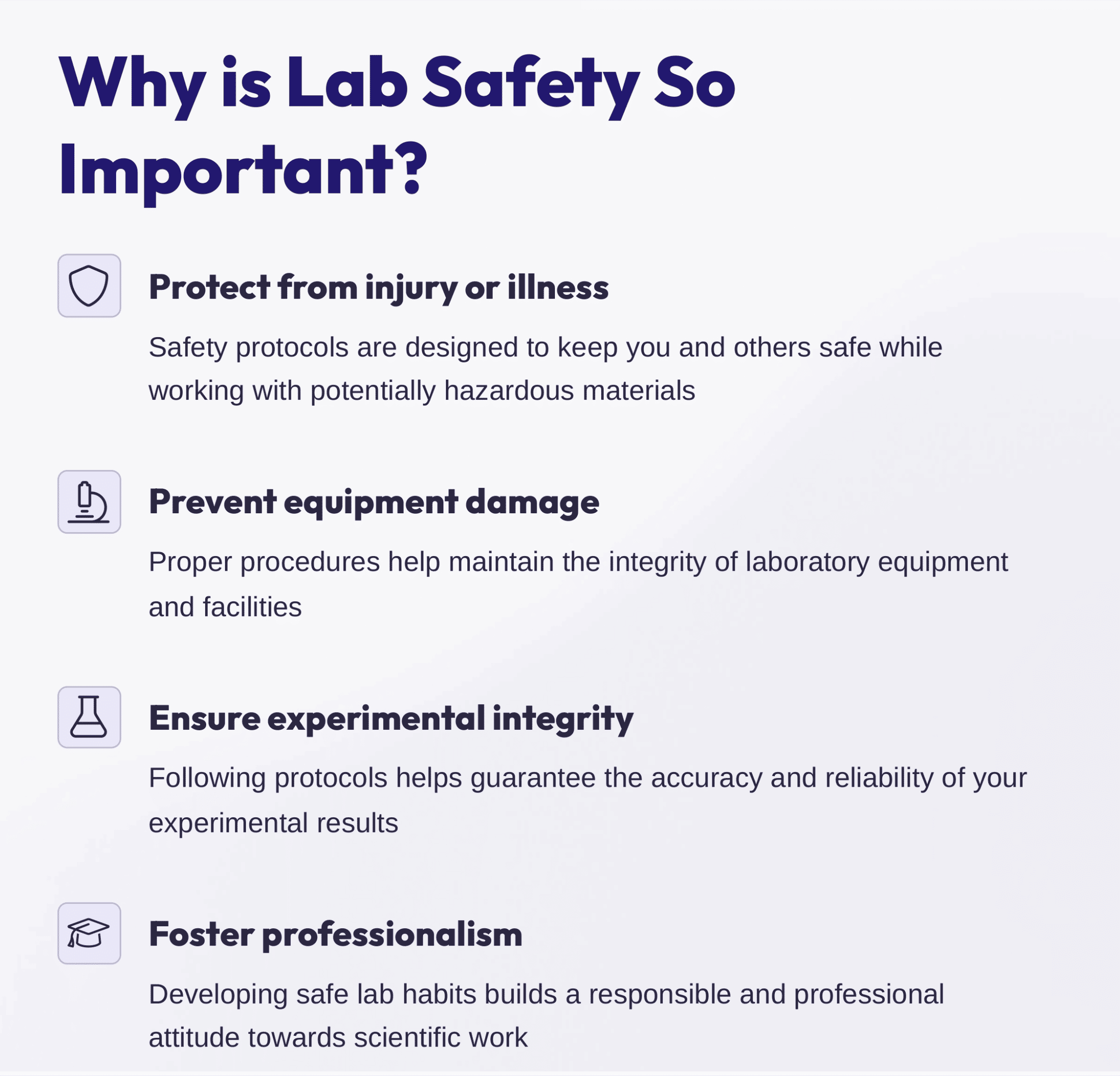
Figure 1: Importance of Lab Safety
2. General Lab Conduct and Rules
These are the golden rules for behavior in any laboratory setting.
-
No Food or Drink: Absolutely no eating, drinking, chewing gum, or applying cosmetics in the lab. Chemicals or microorganisms could contaminate your food/drink or be ingested. Store all personal items in designated areas, not on lab benches.
-
Report All Accidents: Report any accident (spills, cuts, burns, etc.) or injury, no matter how minor, to your lab instructor immediately.
-
Know Emergency Procedures: Familiarize yourself with the location and operation of all safety equipment, including:
- Fire extinguishers
- Eyewash stations
- Safety showers
- First aid kit
- Spill kits
- Emergency exits
-
Dress Appropriately:
- Footwear: Closed-toe shoes are mandatory. Sandals, flip-flops, or shoes with openings are not permitted as they offer no protection from spills or broken glass.
- Clothing: Wear clothing that covers your legs. Shorts or short skirts are generally not recommended. Avoid loose or dangling clothing, jewelry, or unrestrained long hair, as these can get caught in equipment or ignite near flames.
-
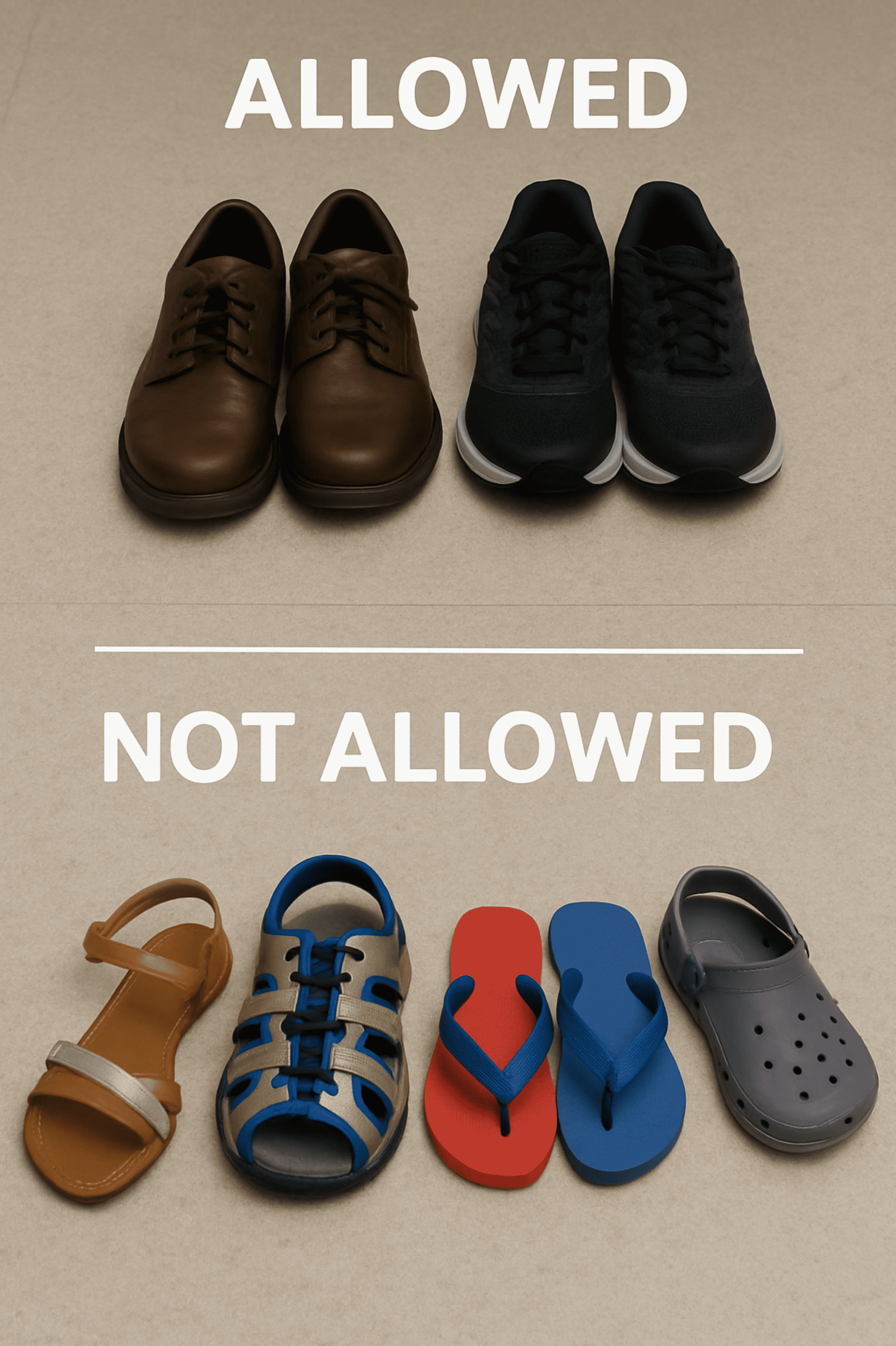
Figure 2: Laboratory Footwear
-
Maintain a Clean Workspace: Keep your lab bench clean and organized. Dispose of waste properly and clean up any spills immediately according to instructions. Wash your hands thoroughly before leaving the lab.
-
Unauthorized Experiments: Never perform unauthorized experiments. Only conduct experiments approved by your instructor.
-
No Horseplay: The lab is a place for serious work. Avoid distracting others or engaging in horseplay.
-
Preparation: Come to the lab prepared. Read your lab manual and any pre-lab assignments before starting an experiment. If you are unsure about any procedure, ask your instructor.
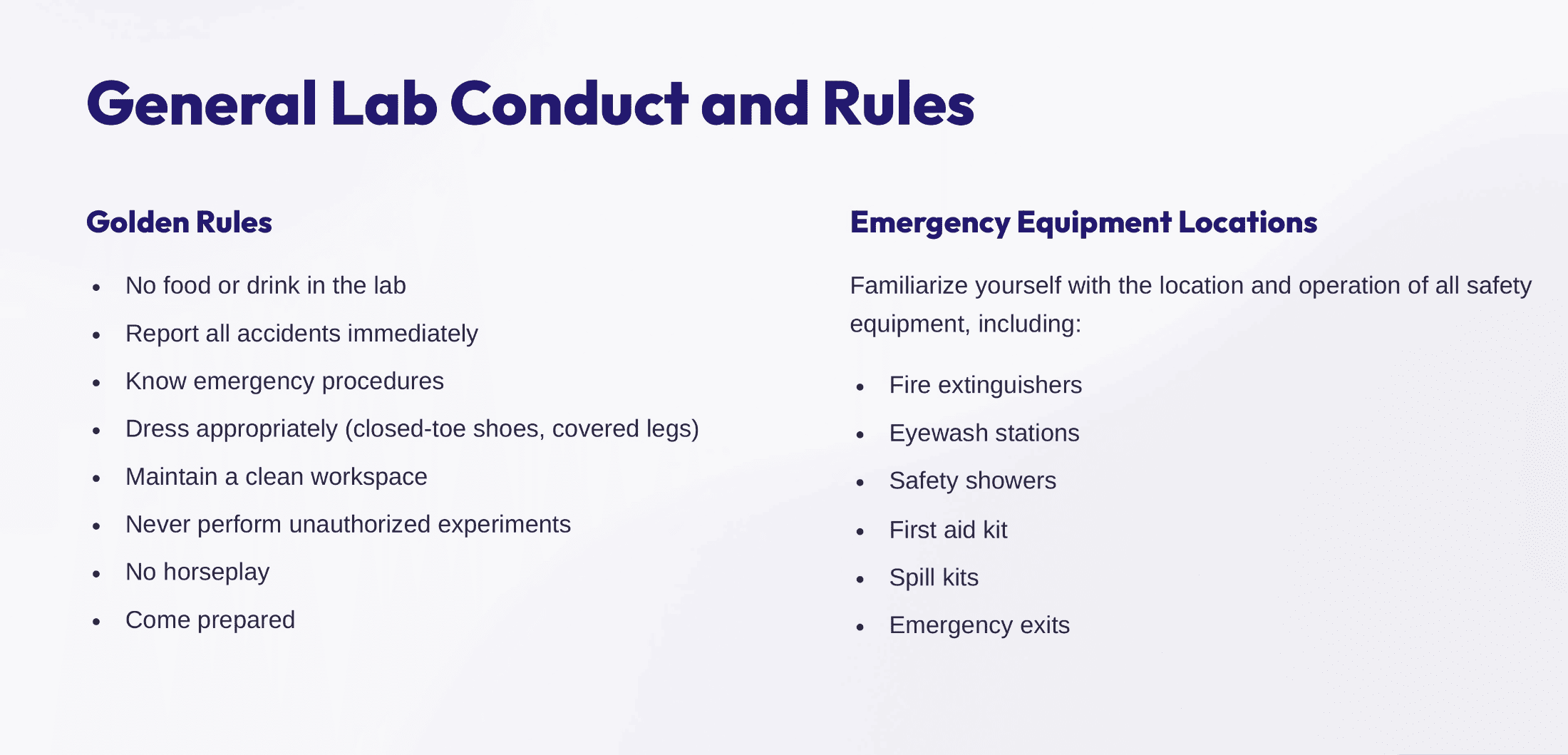
Figure 3: General Lab Etiquette
Watch this video on lab safety:
Watch this video on “Behavior / Lab Safety”:
3. Personal Protective Equipment (PPE)
PPE is your first line of defense against potential hazards. It must be worn correctly and at all times when instructed.
3.1 Lab Coats
- Purpose: Protects skin/clothing from splashes and contamination
- When: Always in lab, fully buttoned
- Care: Never wear outside lab
3.2 Eye Protection
- Purpose: Protects from chemical splashes, projectiles, vapors
- When: Safety goggles (full seal) for liquids/splashes; glasses as specified
- Contacts: Inform instructor; always wear goggles
3.3 Footwear & Clothing (Recap)
As mentioned in General Conduct, closed-toe shoes and clothing covering your legs are essential PPE.
3.4 Gloves
- Purpose: Protects from hazardous materials and temperature extremes
- Types: Nitrile, latex, vinyl - each for specific hazards
- When: For chemicals, biological specimens, or as directed
- Guidelines: Inspect before use; remove before leaving lab or touching personal items; wash hands after
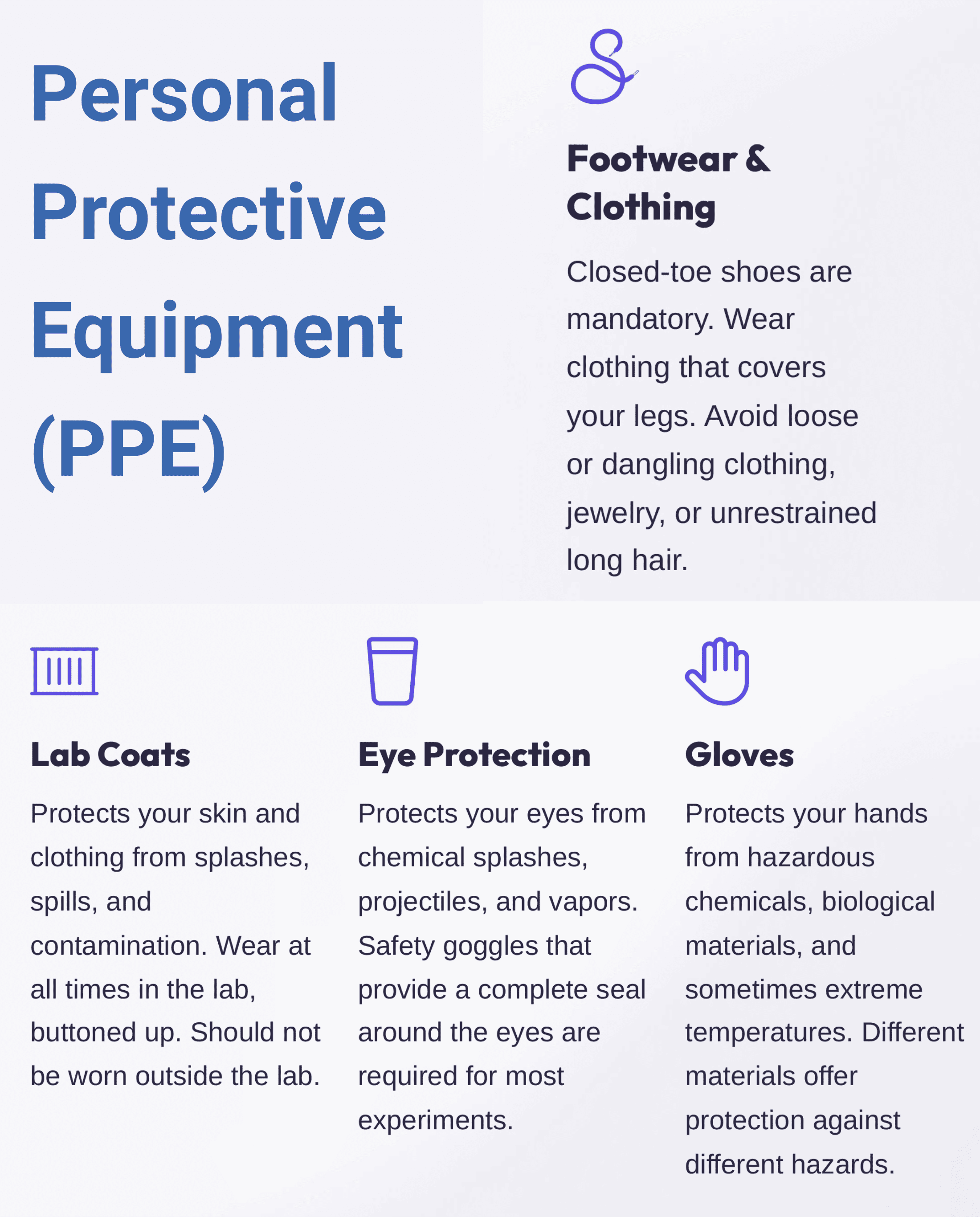
Figure 4: Personal Protective Equipment
How to Properly Remove Contaminated Gloves:
- Grasp Outside: With one gloved hand, grasp the outside of the other glove near the wrist, without touching your bare skin.
- Peel Off: Peel the glove off, turning it inside out as you remove it. The contaminants will be on the inside of the removed glove.
- Hold Removed Glove: Hold the removed glove in your still-gloved hand.
- Slide Fingers Under: Slide the fingers of your ungloved hand under the wrist of the remaining glove, without touching the outside of the glove.
- Peel Off Second Glove: Peel off the second glove, turning it inside out and creating a “bag” for both gloves.
- Dispose: Dispose of the gloves in the designated waste container.
- Wash Hands: Wash your hands thoroughly with soap and water.
Watch this video on how to safely remove disposable gloves:
4. Chemical Safety
Working with chemicals requires careful attention and knowledge.
4.1. Safety Data Sheets (SDS)
- What it is: An SDS (formerly MSDS) is a document that provides detailed information about a hazardous chemical. This includes its properties, health hazards, safety precautions for handling, storage, disposal, and emergency procedures.
- Location: You should know where to find SDS information in your lab (e.g., a binder, online database).
- When to use: Always consult the SDS before working with a new chemical.
Key sections of an SDS often include:
- Identification (product name)
- Hazard(s) identification
- Composition/information on ingredients
- First-aid measures
- Fire-fighting measures
- Accidental release measures
- Handling and storage
- Exposure controls/personal protection
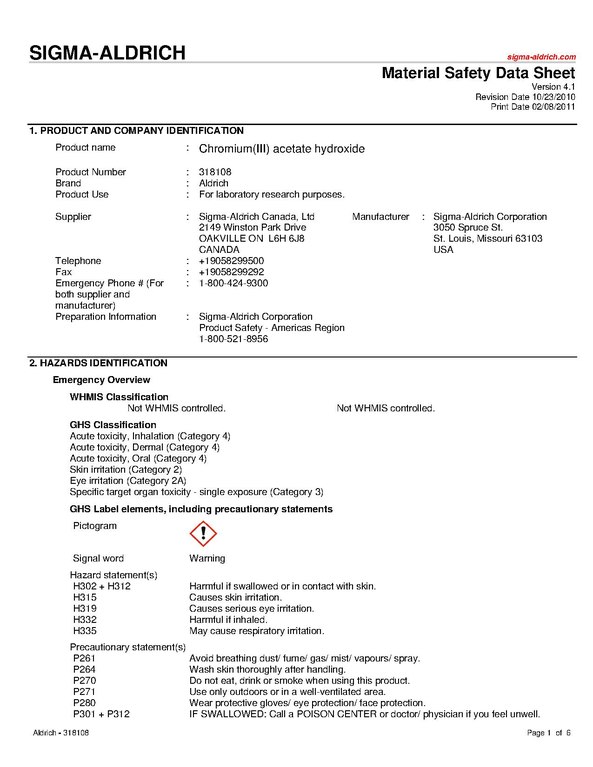 Figure 5: Key information found in an SDS. (Source: wikimedia)
Figure 5: Key information found in an SDS. (Source: wikimedia)
4.2. Chemical Labeling
All chemical containers must be clearly labeled with:
- Name of the chemical
- Concentration (if applicable)
- Date prepared/received
- Hazard warnings (e.g., flammable, corrosive)
- Your initials (if you prepared it) Never use a chemical from an unlabeled or illegibly labeled container.
4.3. Handling Chemicals
- Pouring: When pouring liquids, pour away from yourself and others. Use a funnel for narrow-mouthed containers. If transferring volatile liquids, work in a fume hood if available and instructed.
- Smelling Chemicals (Wafting): Never directly inhale chemical vapors. If instructed to note an odor, gently waft the vapors towards your nose with your hand.
- Pipetting: Never use your mouth to pipette. Always use a pipette bulb or mechanical pipettor.
- Acids and Bases: Handle strong acids and bases with extreme care, always wearing appropriate PPE (goggles, gloves, lab coat). When diluting acids, always add acid slowly to water (AAA rule: Always Add Acid), stirring constantly. This is because the dilution process can generate heat.
4.4. Chemical Waste Disposal
- Dispose of chemical waste only in designated, labeled containers.
- Never pour chemicals down the sink unless explicitly instructed to do so by your instructor. Many chemicals require special disposal methods to protect the environment and plumbing.
- Segregate waste types as directed (e.g., halogenated solvents, non-halogenated solvents, heavy metals).
5. Emergency Procedures
Knowing how to respond in an emergency is critical.
5.1. Fire Safety
- Know Locations: Know the location of fire extinguishers, fire blankets, and emergency exits.
- PASS Technique for Fire Extinguishers:
- Pull the pin.
- Aim the nozzle at the base of the fire.
- Squeeze the handle.
- Sweep from side to side at the base of the fire.
- Evacuation: If a fire alarm sounds or if instructed to evacuate, turn off all equipment, gas, and water, and exit calmly via the nearest safe exit.
5.2. Spill Control
- Report: Report all spills to your instructor immediately.
- Minor Spills: Your instructor will guide you on cleaning minor spills. This might involve using a spill kit containing absorbents and neutralizers.
- Major Spills: For major spills, especially of hazardous materials, alert everyone in the lab, and your instructor will coordinate the cleanup or call for specialized assistance. Evacuate the area if necessary.
5.3. First Aid
- Report all injuries to your instructor.
- Know the location of the first aid kit for minor injuries like small cuts or burns.
- For serious injuries, professional medical attention will be sought immediately.
5.4. Eyewash and Safety Shower
- Location: Know the exact location of the eyewash station and safety shower. Ensure the path to them is always clear.
- Eyewash: If chemicals splash into your eyes, immediately go to the eyewash station. Hold your eyelids open with your fingers and flush your eyes with a continuous stream of water for at least 15 minutes. Seek medical attention.
- Safety Shower: If a large amount of hazardous chemical spills on your body or clothing, use the safety shower. Remove contaminated clothing while under the shower and flush the affected area for at least 15 minutes. Seek medical attention.
Watch this video on how to use an emergency eyewash station and safety shower:

Figure 6: Emergency Procedures
6. Waste Disposal
Proper waste disposal is essential for safety and environmental protection. When in doubt, ask your instructor!
- Regular Trash: For non-hazardous materials like paper towels (unless contaminated), etc.
- Broken Glass Container: For non-contaminated broken glassware.
- Sharps Container: For needles, scalpel blades, contaminated slides.
- Chemical Waste Containers: Specifically labeled containers for different types of chemical waste (e.g., organic solvents, acidic waste, basic waste, heavy metals). Never mix incompatible wastes.
- Biohazard Waste Containers: For materials contaminated with biological agents.
7. Your Responsibility
Safety is a shared responsibility, but it starts with you.
- Be Aware: Be conscious of potential hazards and follow all instructions.
- Be Prepared: Read labs ahead of time.
- Ask Questions: If you are ever unsure about a procedure or safety precaution, ask your instructor before proceeding. There are no stupid questions when it comes to safety.
By adhering to these safety guidelines, you contribute to a safe and effective learning environment for everyone. We look forward to a productive and safe semester in the lab!
Quick Check:
- Resources
- API
- Sponsorships
- Open Source
- Company
- xOperon.com
- Our team
- Careers
- 2025 xOperon.com
- Privacy Policy
- Terms of Use
- Report Issues